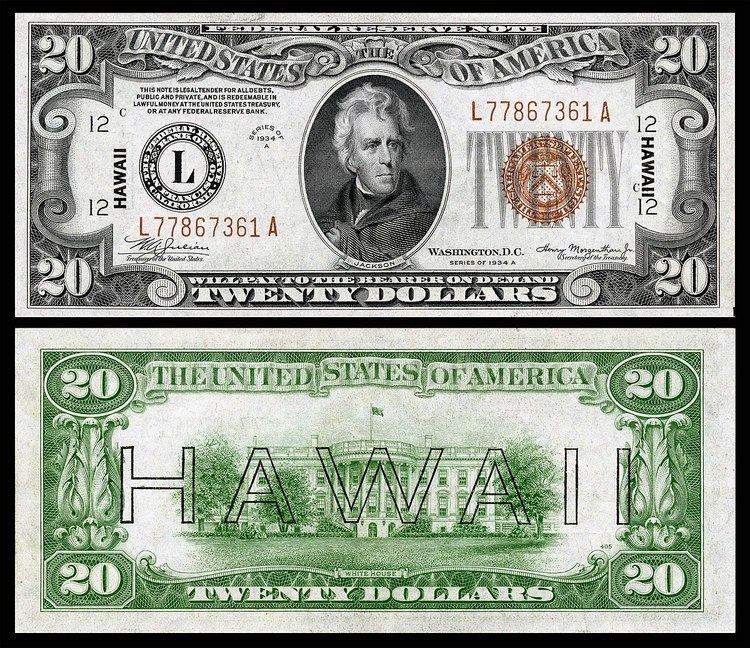Value $1, $5, $10, $20 Nature of rarity Emergency Issue | Years of printing 1942 – 1944 Estimated value US$2 - $1,300 | |
 | ||
A Hawaii overprint note is one of a series of banknotes (one silver certificate and three Federal Reserve Notes) issued during World War II as an emergency issue after the attack on Pearl Harbor. The intent of the overprints was to easily distinguish US currency captured by Japanese forces in the event of an invasion of Hawaii and render the bills useless.
Contents
Issue
After the attack on Pearl Harbor, military officials surmised that in the event of an invasion of Hawaii, Japanese forces would have access to a considerable amount of US currency that could be seized from financial institutions or private individuals. Faced with this scenario, on January 10, 1942, Military Governor Delos Carleton Emmons issued an order to recall all regular US paper money in the islands, save for set caps on how much money both individuals ($200) and businesses ($500; save extra currency for payroll purposes) could possess at any time.
On June 25, 1942, new overprinted notes were first issued. Series 1935A $1 silver certificate, Series 1934 $5 and $20 Federal Reserve Notes, and Series 1934A $5, $10, and $20 Federal Reserve Notes from the Federal Reserve Bank of San Francisco were issued with brown treasury seals and serial numbers. Overprints of the word HAWAII were made; two small overprints to the sides of the obverse of the bill between the border and both the treasury seal and Federal Reserve Bank of San Francisco seal, and huge outlined HAWAII lettering dominating the reverse. The hope was that should there have been a Japanese invasion, the US government could immediately declare any Hawaii-stamped notes worthless, due to their easy identification.
With this issue, military officials made the use of non-overprinted notes redundant and ordered all Hawaii residents to turn in unstamped notes for Hawaii-stamped notes by July 15. Starting from August 15, 1942, no other paper currency could be used except under special permission.
Use
The notes and issuance continued in use until October 21, 1944; by April 1946, notes were being recalled. Many notes were saved as curios and souvenirs by servicemen.
As a collectible
Of the series, the $5 note is considered the most desirable, as a little over 9 million examples were printed. Over 35 million $1 notes were made, making them the most common of the series. Star notes exist for all the notes, and command a sizable premium.
